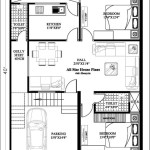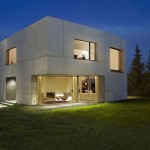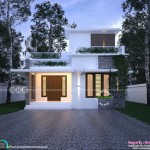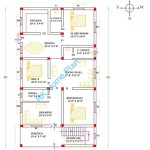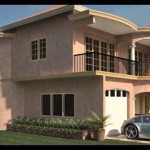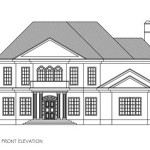Unveiling a Roman Village Floor Plan: Reimagining Life in Ancient Singapore
The concept of a "Roman Village in Singapore" presents an intriguing hypothetical scenario. While no historical evidence suggests the direct presence of Roman settlements in Singapore, exploring the floor plan a typical Roman village and adapting it to the geographical and cultural context of Singapore allows for a fascinating intellectual exercise. This article will delineate the key elements of a Roman village floor plan, and then speculate on how these features might be adapted or modified to suit the environment of pre-colonial Singapore.
Roman villages, known as “vici,” varied in size and complexity, ranging from small agricultural hamlets to larger, more developed communities offering various services. Understanding the common architectural and spatial organization principles of a typical vicus is crucial to visualizing its hypothetical transposition to Singapore.
The following sections will delve into the essential components of a Roman village floor plan, examining their purpose and construction. We will then venture into a thought experiment, exploring how these features could be reimagined within the constraints and opportunities presented by Singapore's historical climate and available resources.
Key Point 1: Core Elements of a Roman Village Floor Plan
A standard Roman village floor plan incorporated several key elements, reflecting the social, economic, and administrative necessities of its inhabitants. These components, while subject to regional variations, generally included the following:
Firstly, a central area, often a forum or open space, served as the focal point of community life. This area was used for gatherings, markets, and religious ceremonies. Surrounding the forum were typically important public buildings, such as a temple (dedicated to Roman deities or local syncretic gods), a basilica (used for judicial and administrative functions), and possibly a curia (town hall) for local governance.
Secondly, residential areas comprised the majority of the village. Roman houses ranged from humble dwellings for peasants and laborers to more elaborate villas for wealthier landowners. These residences were typically constructed from readily available materials, such as stone, brick, or mud brick, depending on the region. The layout of houses varied, but often included a central courtyard or atrium, surrounded by rooms for sleeping, eating, and working.
Thirdly, agricultural land surrounded the village, providing sustenance for its inhabitants. Roman agricultural practices were highly sophisticated, involving crop rotation, irrigation, and the use of fertilizers. Fields were typically divided into plots, and farming was often conducted by tenant farmers or slaves working for wealthy landowners. The village also included storage facilities for grain and other agricultural products.
Fourthly, infrastructure played a vital role in the functioning of a Roman village. This included roads that connected the village to other settlements, aqueducts that provided a reliable source of water, and drainage systems that helped to prevent flooding. The Romans were renowned for their engineering prowess, and their infrastructure was often highly advanced for its time.
Finally, defensive structures, such as walls or ditches, might surround the village, particularly in areas prone to attack. These fortifications provided protection from bandits, rival tribes, or invading armies. The scale and complexity of these defenses varied depending on the village's location and the perceived threat level.
Key Point 2: Adapting the Roman Village to Singapore's Environment
Imagine transposing this Roman village model to pre-colonial Singapore. The hot and humid climate, coupled with the abundance of rainforest and waterways, would necessitate significant adaptations to the standard Roman floor plan. The hypothetical scenario depends on the assumption that Roman knowledge and technology were somehow transferred to this region.
The materials used for construction would differ considerably. Instead of stone and brick, which were readily available in many parts of the Roman Empire, the inhabitants of a Roman-inspired village in Singapore would likely rely on locally sourced materials such as wood, bamboo, and attap (thatched roofing). These materials are well-suited to the humid climate and offer natural ventilation.
The layout of the houses would also need to be modified to accommodate the tropical conditions. Houses would likely be built on stilts to protect against flooding and pests. Large verandas or open-air spaces would provide shade and allow for cross-ventilation. Roofs would be steeply pitched to facilitate rainwater runoff.
The forum, while retaining its function as a central gathering place, might be designed to provide shade and protection from the elements. A large, covered structure, perhaps constructed from wood and bamboo, could serve as a marketplace or meeting hall. The basilica, if present, might also be adapted with open sides and a raised floor to allow for airflow.
Agricultural practices would also need to be tailored to the local environment. The cultivation of rice, a staple crop in Southeast Asia, would likely be a central focus. Other crops, such as fruits, vegetables, and spices, could also be grown. The Romans' knowledge of irrigation could be adapted to manage water resources in the monsoon climate.
The aqueduct system would need to be re-imagined. Instead of moving water over long distances, perhaps a system of rainwater harvesting and storage could be implemented. Wells and natural springs could also be utilized to provide a reliable water supply.
Defensive structures, if necessary, might consist of wooden palisades or earthen ramparts. The dense rainforest surrounding the village would provide a natural barrier against attack. The inhabitants could also rely on their knowledge of the local terrain to create traps and ambushes.
Key Point 3: Socioeconomic Considerations and Cultural Integration
The introduction of a Roman-style village to Singapore would inevitably lead to interactions and exchanges with the existing indigenous population. These interactions would shape the socioeconomic landscape and cultural fabric of the region.
The Romans' advanced agricultural techniques and organizational skills could potentially boost food production and improve the overall standard of living. However, the introduction of new crops and farming methods could also disrupt existing agricultural practices and land ownership patterns.
The Romans' knowledge of construction and engineering could lead to the development of new infrastructure and technologies. However, the imposition of Roman architectural styles and construction techniques could also neglect local traditions and materials. There would have to be a blend of existing architecture with Roman architecture to produce something unique.
The introduction of Roman law and governance could have a profound impact on the existing social and political structures. The Romans' emphasis on centralized authority and codified laws could clash with the more decentralized and customary systems of governance prevalent in pre-colonial Singapore. The idea of Roman citizenship would become a topic of conversation.
Cultural exchange would be inevitable. The Romans would likely introduce their language, religion, and customs to the local population. Conversely, the Romans would also be exposed to the indigenous cultures and traditions of Singapore. This cultural exchange could lead to the syncretism of Roman and local beliefs and practices.
The success of a Roman-inspired village in Singapore would depend on its ability to adapt to the local environment and integrate with the existing population. A balance would need to be struck between the imposition of Roman ideas and practices and the preservation of local traditions and cultures. The introduction of new technologies and agricultural methods would need to be carefully managed to avoid disrupting existing social and economic structures. The assimilation of new ideas and cultures is complex and doesn't necessarily happen immediately.
This hypothetical exercise highlights the challenges and opportunities involved in transplanting a cultural and architectural model from one context to another. It underscores the importance of understanding the local environment, respecting existing traditions, and adapting to the unique circumstances of a given region. The fusion of Roman ingenuity with the inherent resilience of Southeast Asian culture would generate a distinctive and hybrid society.

3d Model Romans Roman Villa Teacher Made Twinkl

Roman Villa Labelling Activity Sheet Twinkl Ks2

Roman Villa Large Display Poster Teacher Made Twinkl

The Late Roman Villa Of Caddeddi World Archaeology

Roman Baths Diagram Display Poster Teacher Made Twinkl

Ancient Wellness Diocletian Baths Treatments Anantara Nomads Blog

Roman Villa Paper Model

Rural Romanitas Rethinking The Role Of Villas Past

Chedworth Roman Villa Exploring Over 150 Years Of Interpretation The Past

Mini Roman Villa Lego Historic Themes Eurobricks Forums

